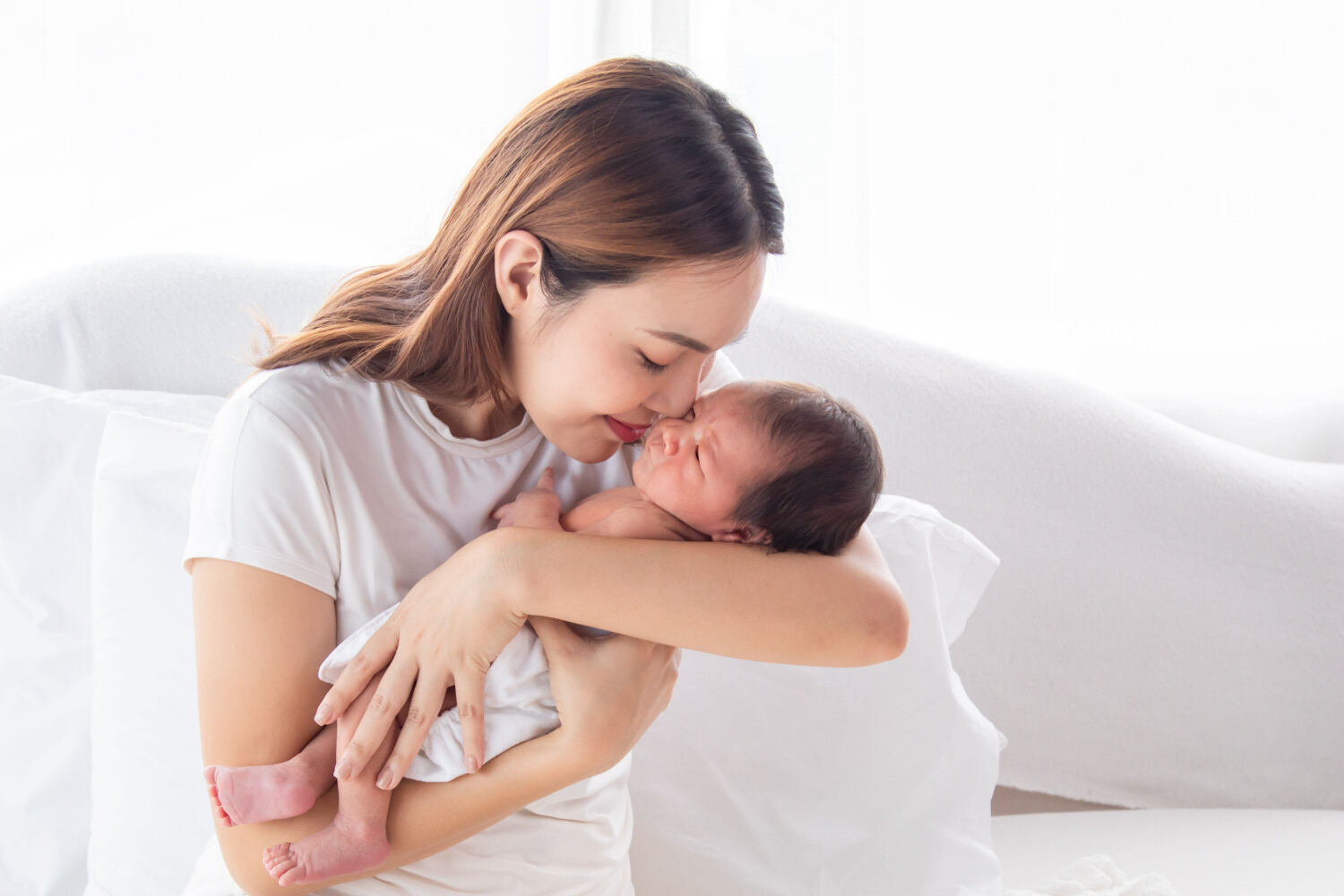
Cleft Lip In Babies
6 min readWritten by Editorial Team


Most of the babies born in this world are healthy. But out of 100 children born, 3 infants will be born with congenital (existing at or before birth regardless of cause) or hereditary birth defects. A cleft lip is considered the fourth most common birth defect found among infants.
One out of 700 babies born annually is found to be born with cleft lip with or without cleft palate. Giving birth to a child with a cleft lip can cause a psychological impact on the parents, especially the mother.
In This Article
- What Is A Cleft Lip (CL)?
- What Is Cleft Palate (CP)?
- Do Cleft Lip And Cleft Palate Always Occur Together In Babies?
- How Does Cleft Lip Occur In Babies?
- What Problems Are Associated With The Cleft Lip In Babies?
- How Are Cleft Lips Diagnosed In Babies?
- How Is Cleft Lip In Infants Treated?
What Is A Cleft Lip (CL)?
A cleft lip is a facial malformation found in newly born infants. An infant with a cleft lip will have the upper lip physically separated into two with a narrow opening. Sometimes, this separation is often found to extend beyond the base of the nose. In most cases, the upper jaw and upper gum are also found to separate. A cleft lip can occur as unilateral (one-sided) or bilateral (two-sided)
What Is Cleft Palate (CP)?
The roof of the mouth is called the palate. When the roof of the mouth possesses a split or opening, a cleft palate is said to occur. It is another malformation found among newborns.
Do Cleft Lip And Cleft Palate Always Occur Together In Babies?
The development of the lip and palate are not connected. So, it is not necessary that a cleft lip (CL) is accompanied by a cleft palate (CP) and vice versa. But both the cleft palate and cleft lip together (CLP) are also found in many cases.
How Does Cleft Lip Occur In Babies?

The structure of the mouth and face starts to take shape during the first trimester of pregnancy. The lips start to develop between the 4th and 7th weeks of pregnancy. The development of the lips starts from both sides of the face and then fuses at the center. When the tissues that form the lips are not properly joined together, CL occurs.
The exact cause of cleft lips in babies is still unknown. Some scientists think that the interaction of both environmental and genetic factors are behind the formation of cleft lips. Some of the reasons believed to be behind cleft lips are:
- Genetic reasons: The chances of the child getting the CL increases if a sibling, parent, or relative has had the problem
- Medication: Some medicines that the mother may have taken during her pregnancy can result in cleft lip in the child. Some of the drugs that can increase the risk of CL are:
- Some of the anti-seizure medicines used for treating epilepsy
- Acne medicines that contain ‘Accutane’
- Methotrexate belongs to a class of drugs known as antimetabolites and is used in treating some kinds of cancer, arthritis, and psoriasis. If the mother used to take this drug for any of the reasons mentioned the chances of cleft lip in the newborn increases
- Smoking: The women who smoke during their pregnancy period are found to have a higher risk to have a baby with a cleft lip than the women who don’t smoke.
- Exposure: The chances of having a baby with cleft lip increases when the mother is exposed to some chemicals or viruses during pregnancy
- Diabetes: When a mother is diagnosed with diabetes before conceiving, she develops an increased risk of having a child with a cleft lip, compared to women who did not have diabetes
What Problems Are Associated With The Cleft Lip In Babies?

Several difficulties are associated with CL that affects the baby by hindering a normal life. The difficulties increase with the severity of the CL. A split in the lip can vary from a small notch in the lip to a large extension that starts from the lip, passes through the upper gum and palate, and gets into the bottom of the nose.
One of the main issues the baby faces is trouble to breast feed. This depends on the severity of the cleft. The baby with a minor notch won’t face many issues. But when the gum also bears a cleft, then breastfeeding may not be an easy task for him.
Some of the issues that the baby has to face in the future due to CL are:
1. The Trouble With Speaking
Children with cleft lips are often found to develop issues with speech. It will be difficult for them to produce certain sounds and the issues with the speech increases with the severity and the speech becomes more unclear putting the child in a difficult situation.
2. The Trouble With Teething
Babies with CL are often found to have dental problems. These problems include missing teeth, extra teeth, crooked teeth, and smaller teeth. They often need to visit the dentist to clean their teeth, and put the braces to make sure the teeth are growing straight.
How Are Cleft Lips Diagnosed In Babies?
Distinctive physical changes are caused due to CL. A prenatal ultrasound scan can sometimes disclose the presence of a cleft lip in an unborn child. If the diagnosis of cleft lip is missed during an ultrasound scan (which occurs very rarely), CL is easily diagnosed during the first look at the baby after the birth.
How Is Cleft Lip In Infants Treated?

An infant with a CL needs several surgeries to correct the abnormality. Managing the CL is equally important as the treatment. Because of several oral and medical issues that usually accompany the cleft lip, there will be a team of specialists to assist the child and to meet the individual needs of the child while undergoing treatment. The typical panel includes:
- An oral surgeon to repair the cleft in the gum
- A speech pathologist to take care of the speech and feeding problems
- A plastic surgeon to achieve a normal facial appearance
- An otolaryngologist (an ENT doctor) to analyze the hearing problems and think about the treatment options
As the child grows, CL treatment may involve the following:
- An orthodontist to straighten and re-positioning the teeth
- A speech therapist improves the speech of the child
- Monitoring by a pediatric dentist for the development of the tooth and the oral health
- A prosthodontist for making the artificial teeth and dental appliances to revamp the looks and to persuade the functional requirements for eating and speaking
- A psychologist to support the family and the child and solve the adjustment issues
Surgery To Repair The Cleft Lip

This surgery is done within three to six months after the baby is born. The first stage of the surgery includes:
- Existing muscles and tissues of the child’s lip are stitched together to give a normal lip appearance. Initial nasal repair, if needed, is also done at the same time. The child will stay in the hospital after surgery for around two days
- Additional surgeries are done depending upon the severity of damages to improve the appearance of the mouth and nose
- Some children need to have another procedure on their lips and nose before they begin school, or when they enter adolescence while others need a bone graft when they are about eight years old. This is done to fill the gap in the upper gum area. This surgery is significant for the upper gum to hold the permanent teeth better and steady the upper jaw. Some children with minor CL don’t require further follow-up surgeries at all
The Surgery will improve not only your child’s appearance, but also his quality of life, and his capability to eat, breathe and talk normally.
When you give birth to a baby with a CL, you can be in boundless torment. But now you understand that the cleft lip and cleft palate can be successfully corrected with minimal scarring. So now go ahead with the treatment with an optimistic mind and help and encourage your child to lead a normal healthy life.

Editorial Team,
With a rich experience in pregnancy and parenting, our team of experts create insightful, well-curated, and easy-to-read content for our to-be-parents and parents at all stages of parenting.Read more.
Responses (0)
Want curated content sharply tailored for your exact stage of parenting?
Related articles

Acrocyanosis in Newborns – What is it, Causes and Symptoms

Kissing a Baby – Is it Safe?

Bedtime Fading Method of Sleep Training Your Baby – Know All About it

Hummus For Babies – When to Introduce, Benefits and Precautions

Driving after C Section – Is It Safe?

Mongolian Blue Spots in Babies – Causes, Symptoms & Treatment
Sponsored content
Discover great local businesses around you for your kids.
Get regular updates, great recommendations and other right stuff at the right time.





